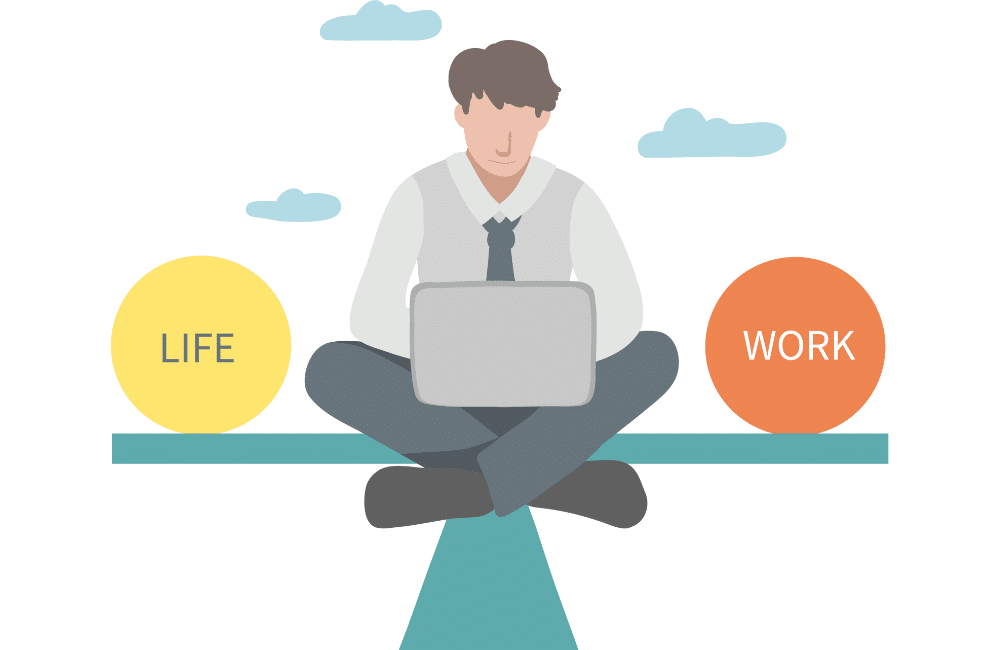In today’s fast-paced world, striking a balance between work and personal life has become increasingly challenging. Many individuals find themselves overwhelmed by the demands of their jobs, leading to stress, burnout, and a compromised sense of well-being.

However, by adopting effective strategies and making conscious choices, it is possible to cultivate a healthier work-life balance that enhances both professional success and personal fulfillment. This article explores the key principles and provides practical examples to help you achieve equilibrium and improve your overall well-being.
Understanding Work-Life Balance
Defining Work-Life Balance
Work-life balance refers to the harmonious integration of work, personal life, and self-care. It involves finding the right balance that allows individuals to excel in their professional endeavors while also prioritizing their personal well-being and nurturing relationships. Recognizing priorities and aligning actions accordingly is crucial in achieving a healthy work-life balance.

The Impact of Work-Life Imbalance
When work and personal life are out of balance, it can harm mental and physical health. Increased stress levels, strained relationships, and decreased productivity are common consequences. Therefore, taking proactive measures to restore balance and improve the overall quality of life is important.
Strategies for Cultivating Work-Life Balance
Set Clear Boundaries
Setting clear boundaries between work and personal life is essential. Establishing regular work hours and creating a dedicated workspace can help separate work from home, reducing distractions and enabling focused productivity. Moreover, limiting after-hours communication sets realistic expectations regarding availability and ensures personal time is respected.
Prioritize Self-Care
Making self-care a priority is vital for maintaining a healthy work-life balance. Regular exercise improves physical well-being, boosts energy levels, and reduces stress. Nurturing mental well-being through activities such as meditation, journaling, or engaging in hobbies can enhance overall resilience. Additionally, embracing downtime and allowing guilt-free breaks for relaxation and rejuvenation is crucial.
Delegate and Seek Support
Learning to delegate responsibilities at work and home lightens the load and creates opportunities for more balance. Effective communication about work-life balance requirements with employers, colleagues, and loved ones is essential. Support systems, such as friends, family, or professional services, can assist when juggling multiple responsibilities.
Manage Time Effectively
Time management plays a vital role in achieving work-life balance. Prioritizing and planning tasks helps identify and focus on the most important ones. Avoiding multitasking and concentrating on one task at a time enhances efficiency and productivity. Learning to say no to non-essential commitments is crucial in preventing overwhelming workloads.
Real-Life Examples of Successful Work-Life Balance
1. Flexible Work Arrangements
Flexible work arrangements offer opportunities for a better work-life balance. Remote work allows employees to work from home, reducing commuting time and increasing flexibility. Compressed workweeks, where employees work longer hours daily to enjoy longer weekends, can provide valuable downtime. Job sharing, where responsibilities are shared and employees work part-time, allows for a more balanced approach.
2. Implementing Work-Life Integration Programs
Companies can support work-life balance by implementing various programs. Wellness initiatives, such as offering gym memberships, meditation classes, or counseling services, promote employee well-being. Parental leave policies that provide extended leave options and flexible return-to-work plans help new parents adjust to their roles. Sabbaticals, granting extended time off for personal growth, travel, or education, enable employees to recharge and gain new perspectives.
Final Thoughts
Striving for a healthier work-life balance is crucial for overall well-being and fulfillment. By implementing strategies such as setting clear boundaries, prioritizing self-care, delegating tasks, and managing time effectively, individuals can achieve a more harmonious integration of work and personal life. Real-life examples, such as flexible work arrangements and work-life integration programs, demonstrate the positive impact of creating a supportive environment that values work-life balance. Remember, achieving a healthier work-life balance is an ongoing process that requires conscious effort and adaptability, but the rewards in terms of well-being and satisfaction are truly worthwhile.

